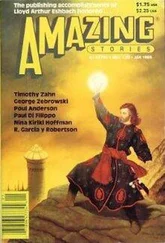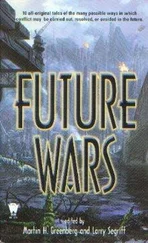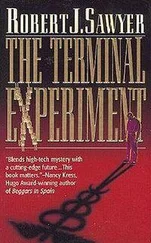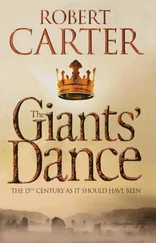Robert Sawyer - The Shoulders of Giants
Здесь есть возможность читать онлайн «Robert Sawyer - The Shoulders of Giants» весь текст электронной книги совершенно бесплатно (целиком полную версию без сокращений). В некоторых случаях можно слушать аудио, скачать через торрент в формате fb2 и присутствует краткое содержание. Год выпуска: 2000, ISBN: 2000, Издательство: DAW, Жанр: Космическая фантастика, на английском языке. Описание произведения, (предисловие) а так же отзывы посетителей доступны на портале библиотеки ЛибКат.
- Название:The Shoulders of Giants
- Автор:
- Издательство:DAW
- Жанр:
- Год:2000
- ISBN:0-886-77894-8
- Рейтинг книги:3 / 5. Голосов: 1
-
Избранное:Добавить в избранное
- Отзывы:
-
Ваша оценка:
- 60
- 1
- 2
- 3
- 4
- 5
The Shoulders of Giants: краткое содержание, описание и аннотация
Предлагаем к чтению аннотацию, описание, краткое содержание или предисловие (зависит от того, что написал сам автор книги «The Shoulders of Giants»). Если вы не нашли необходимую информацию о книге — напишите в комментариях, мы постараемся отыскать её.
century to Tau Ceti, after more than a thousand years of flight is nearing its destination. But technical progress did not stand still back on Earth through all those years, and Tau Ceti has already been populated by humans for centuries…
The Shoulders of Giants — читать онлайн бесплатно полную книгу (весь текст) целиком
Ниже представлен текст книги, разбитый по страницам. Система сохранения места последней прочитанной страницы, позволяет с удобством читать онлайн бесплатно книгу «The Shoulders of Giants», без необходимости каждый раз заново искать на чём Вы остановились. Поставьте закладку, и сможете в любой момент перейти на страницу, на которой закончили чтение.
Интервал:
Закладка:
The Shoulders of Giants
by Robert J. Sawyer
It seemed like only yesterday when I’d died, but, of course, it was almost certainly centuries ago. I wish the computer would just tell me, dammitall, but it was doubtless waiting until its sensors said I was sufficiently stable and alert. The irony was that my pulse was surely racing out of concern, forestalling it speaking to me. If this was an emergency, it should inform me, and if it wasn’t, it should let me relax.
Finally, the machine did speak in its crisp, feminine voice. “Hello, Toby. Welcome back to the world of the living.”
“Where—” I’d thought I’d spoken the word, but no sound had come out. I tried again. “Where are we?”
“Exactly where we should be: decelerating toward Soror.”
I felt myself calming down. “How is Ling?”
“She’s reviving, as well.”
“The others?”
“All forty-eight cryogenics chambers are functioning properly,” said the computer. “Everybody is apparently fine.”
That was good to hear, but it wasn’t surprising. We had four extra cryochambers; if one of the occupied ones had failed, Ling and I would have been awoken earlier to transfer the person within it into a spare.
“What’s the date?”
“16 June 3296.”
I’d expected an answer like that, but it still took me back a bit. Twelve hundred years had elapsed since the blood had been siphoned out of my body and oxygenated antifreeze had been pumped in to replace it. We’d spent the first of those years accelerating, and presumably the last one decelerating, and the rest—
—the rest was spent coasting at our maximum velocity, 3,000 km/s, one percent of the speed of light.
My father had been from Glasgow; my mother, from Los Angeles. They had both enjoyed the quip that the difference between an American and a European was that to an American, a hundred years was a long time, and to a European, a hundred miles is a big journey.
But both would agree that twelve hundred years and 11.9 light-years were equally staggering values. And now, here we were, decelerating in toward Tau Ceti, the closest sunlike star to Earth that wasn’t part of a multiple-star system. Of course, because of that, this star had been frequently examined by Earth’s Search for Extraterrestrial Intelligence. But nothing had ever been detected; nary a peep.
I was feeling better minute by minute. My own blood, stored in bottles, had been returned to my body and was now coursing through my arteries, my veins, reanimating me.
We were going to make it.
Tau Ceti happened to be oriented with its north pole facing toward Sol; that meant that the technique developed late in the twentieth century to detect planetary systems based on subtle blueshifts and redshifts of a star tugged now closer, now farther away, was useless with it. Any wobble in Tau Ceti’s movements would be perpendicular, as seen from Earth, producing no Doppler effect. But eventually Earth-orbiting telescopes had been developed that were sensitive enough to detect the wobble visually, and—
It had been front-page news around the world: the first solar system seen by telescopes. Not inferred from stellar wobbles or spectral shifts, but actually seen . At least four planets could be made out orbiting Tau Ceti, and one of them—
There had been formulas for decades, first popularized in the RAND Corporation’s study Habitable Planets for Man . Every science-fiction writer and astrobiologist worth his or her salt had used them to determine the life zones — the distances from target stars at which planets with Earthlike surface temperatures might exist, a Goldilocks band, neither too hot nor too cold.
And the second of the four planets that could be seen around Tau Ceti was smack-dab in the middle of that star’s life zone. The planet was watched carefully for an entire year — one of its years, that is, a period of 193 Earth days. Two wonderful facts became apparent. First, the planet’s orbit was damn near circular — meaning it would likely have stable temperatures all the time; the gravitational influence of the fourth planet, a Jovian giant orbiting at a distance of half a billion kilometers from Tau Ceti, probably was responsible for that.
And, second, the planet varied in brightness substantially over the course of its twenty-nine-hour-and-seventeen-minute day. The reason was easy to deduce: most of one hemisphere was covered with land, which reflected back little of Tau Ceti’s yellow light, while the other hemisphere, with a much higher albedo, was likely covered by a vast ocean, no doubt, given the planet’s fortuitous orbital radius, of liquid water — an extraterrestrial Pacific.
Of course, at a distance of 11.9 light-years, it was quite possible that Tau Ceti had other planets, too small or too dark to be seen. And so referring to the Earthlike globe as Tau Ceti II would have been problematic; if an additional world or worlds were eventually found orbiting closer in, the system’s planetary numbering would end up as confusing as the scheme used to designate Saturn’s rings.
Clearly a name was called for, and Giancarlo DiMaio, the astronomer who had discovered the half-land, half-water world, gave it one: Soror, the Latin word for sister. And, indeed, Soror appeared, at least as far as could be told from Earth, to be a sister to humanity’s home world.
Soon we would know for sure just how perfect a sister it was. And speaking of sisters, well — okay, Ling Woo wasn’t my biological sister, but we’d worked together and trained together for four years before launch, and I’d come to think of her as a sister, despite the press constantly referring to us as the new Adam and Eve. Of course, we’d help to populate the new world, but not together; my wife, Helena, was one of the forty-eight others still frozen solid. Ling wasn’t involved yet with any of the other colonists, but, well, she was gorgeous and brilliant, and of the two dozen men in cryosleep, twenty-one were unattached.
Ling and I were co-captains of the Pioneer Spirit . Her cryocoffin was like mine, and unlike all the others: it was designed for repeated use. She and I could be revived multiple times during the voyage, to deal with emergencies. The rest of the crew, in coffins that had cost only $700,000 a piece instead of the six million each of ours was worth, could only be revived once, when our ship reached its final destination.
“You’re all set,” said the computer. “You can get up now.”
The thick glass cover over my coffin slid aside, and I used the padded handles to hoist myself out of its black porcelain frame. For most of the journey, the ship had been coasting in zero gravity, but now that it was decelerating, there was a gentle push downward. Still, it was nowhere near a full g, and I was grateful for that. It would be a day or two before I would be truly steady on my feet.
My module was shielded from the others by a partition, which I’d covered with photos of people I’d left behind: my parents, Helena’s parents, my real sister, her two sons. My clothes had waited patiently for me for twelve hundred years; I rather suspected they were now hopelessly out of style. But I got dressed — I’d been naked in the cryochamber, of course — and at last I stepped out from behind the partition, just in time to see Ling emerging from behind the wall that shielded her cryocoffin.
“ ’Morning,” I said, trying to sound blase.
Ling, wearing a blue and gray jumpsuit, smiled broadly. “Good morning.”
We moved into the center of the room, and hugged, friends delighted to have shared an adventure together. Then we immediately headed out toward the bridge, half-walking, half-floating, in the reduced gravity.
Читать дальшеИнтервал:
Закладка:
Похожие книги на «The Shoulders of Giants»
Представляем Вашему вниманию похожие книги на «The Shoulders of Giants» списком для выбора. Мы отобрали схожую по названию и смыслу литературу в надежде предоставить читателям больше вариантов отыскать новые, интересные, ещё непрочитанные произведения.
Обсуждение, отзывы о книге «The Shoulders of Giants» и просто собственные мнения читателей. Оставьте ваши комментарии, напишите, что Вы думаете о произведении, его смысле или главных героях. Укажите что конкретно понравилось, а что нет, и почему Вы так считаете.







